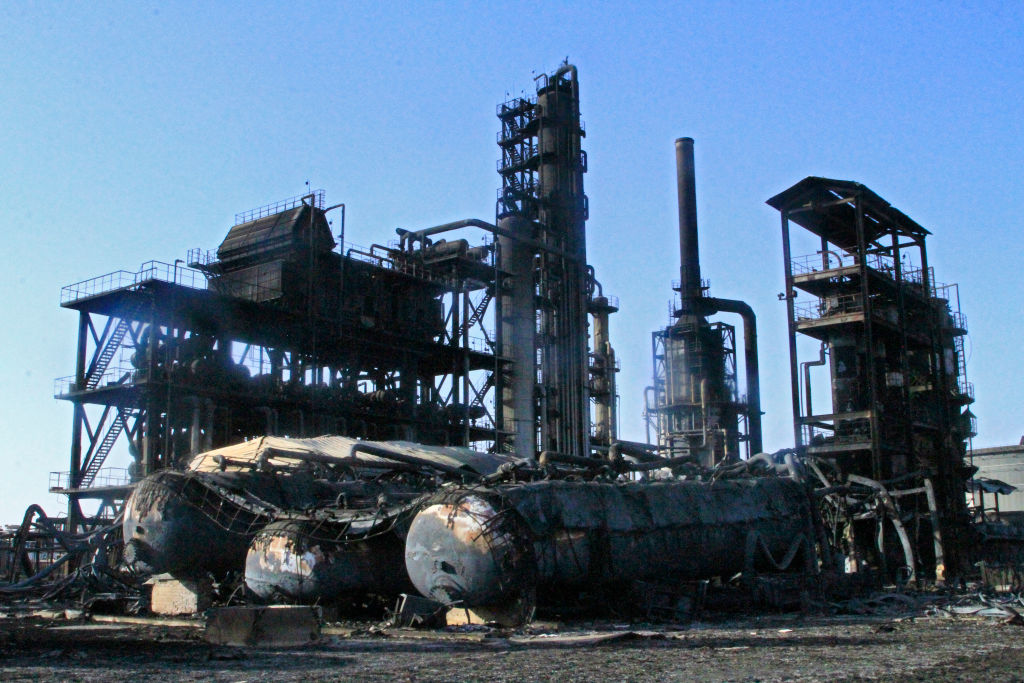International observers are accusing the Sudanese Armed Forces (SAF) of using banned chemical weapons against the paramilitary Rapid Support Forces (RSF) based, in part, on recent video evidence from a 2024 attack on a military base and oil refinery north of Khartoum.
RSF fighters occupied the base in Garri and the nearby al-Jaili oil refinery at the time of the September 2024 battle with the SAF.
At the time of the battle, the RSF had held the oil refinery since April 2023. The SAF recaptured it in January 2025.
Video and images posted to social media about the time of the SAF’s September 5, 2024, attack on the Garri military base show a cloud of green-yellow gas spreading across the ground and rising into the air. A week later, on September 13, the RSF reported that SAF warplanes released bombs containing toxic gas near the oil refinery. The gas caused respiratory problems for refinery workers.
Experts say that the cloud that formed during the September 5 attack is likely evidence that the SAF used chlorine gas. The weapon is similar to the one Syria’s government used against rebels nearly a decade ago.
The SAF has denied using chemical weapons.
That denial was met with skepticism when the African Commission on Human and Peoples’ Rights gathered October 21 in The Gambia. Commission members called for Sudan to cooperate with investigators from the Organisation for the Prohibition of Chemical Weapons to determine the facts.
Sudan War Monitor is among the observers that dispute the SAF’s denial.
“Through our social media monitoring, we identified potentially credible reports and visual evidence of chemical weapons use, though we cannot assess the extent of these attacks,” Sudan War Monitor, a collaborative of journalists and open source researchers, reported in May shortly after the United States government accused the SAF of launching chemical attacks.
Sudan War Monitor reported that the SAF has used barrel bombs against civilians in Darfur and Kordofan regions. Barrel bombs, as the name implies, are a form of improvised explosive device (IED) made form an oil drum or similar container and packed with explosives. They have been condemned under international law.
Open-source reporting and expert analysis by France 24 Observers support claims that the SAF used chlorine gas in Garri. Images taken by RSF fighters inside the Garri base show green and yellow barrels on the ground.
“These are clearly chlorine cylinders,” Dan Kaszeta, a specialist in chemical defense, told France 24 Observers. “This type of container is used all over the world for water treatment.”
One of the barrels had visible markings tying it to a shipment of liquid chlorine from an Indian chemical company to Port Sudan in August 2024. The liquid chlorine was intended to be used to treat drinking water in Sudan.
Similar images shot at the oil refinery on September 13 show another barrel beneath a tree. Men working at the refinery reported that the barrel leaked a substance that sent several people to the hospital with severe breathing problems.
An engineer who was working at the refinery at the time of the attack told France 24 Observers that he helped several coworkers who were found unconscious or struggling to breathe at the site where the barrel landed.
Kaszeta told France 24 Observers that an aerial attack like those in the Garri region would be unlikely to kill anyone outright.
“In reality, it is very difficult to kill someone with this gas when it is dispersed in the open air, in this way. It is mostly used as a strong irritant, to force opponents out of shelters and make them vulnerable to conventional bombardment. That was how it was mostly used in Syria,” he said.
Chemical weapons experts told France 24 Observers that the Garri attacks are consistent with chlorine gas but warned that on-the-ground inspections would be needed to confirm that.
The evidence is consistent with a recent trend of repurposing industrial materials, such as chlorine, for combat purposes, according to N.R. Jenzen-Jones, director of Armament Research Services, an Australian arms and munitions consultant.
“In this case the evidence is fairly convincing and points towards attacks using chlorine gas as a weapon,” Jenzen-Jones told France 24 Observers. “It is perhaps, unfortunately, unsurprising to see this method of warfare adopted elsewhere.”

